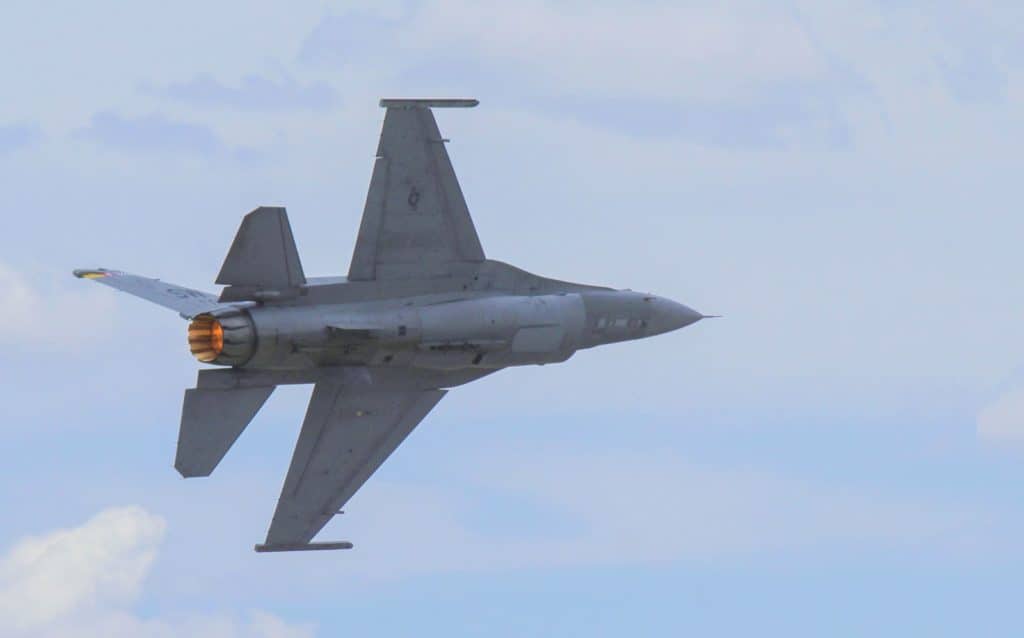The Role of Nondestructive Testing in the Air Force

The U.S. and other air forces are tasked with immense responsibilities. Accomplishing their strategic goals of national defense requires maintaining some of the most complex technological systems in the world. A stunning variety of airborne craft and munitions provide communications, logistics, and defensive superiority across the skies. Securing mission readiness requires effective systems maintenance, informed by modern, powerful nondestructive testing solutions.
Nondestructive testing (NDT) provides essential information to military air fleets. Using ultrasonic and eddy current testing equipment, NDT technicians can rapidly inspect the integrity of aircraft parts and materials. These technologies allow technicians to find flaws and damage invisible to the naked eye, preventing systems failure in the air.
Due to their proven value, in the U.S. and other air forces, the use of these technologies is stipulated in codes and regulations. To interpret and apply these dictates, fleet maintenance officers must be well versed in ultrasonic and eddy current testing technology and provided with accurate, dependable equipment.
Air Force Nondestructive Testing Training Requirements
Quality training programs enable military air fleets to maintain their equipment. Training programs typically consist of preliminary aptitude tests, classroom instruction, written examinations, and practical experience. Courses can be provided by qualified military instructors, third-party training organizations, or by the manufacturers of the equipment being used.
When possible, it is always preferable to train students on the type of equipment they will eventually work with. While NDT equipment operates on the same principles regardless of manufacturer, hardware and software differences between equipment can lead to slower inspections or even errors when using unfamiliar equipment.
While different militaries have different ranks and grades, NDT technicians are typically divided into three categories: Level I, Level II, and Level III.
- Level I, or apprentice technicians, should be able to set up, calibrate, and operate NDT equipment under supervision. Basic technicians should be able to detect issues and prepare reports for supervisory review.
- Level II, or intermediate technicians, should be competent to set up, calibrate, and operate NDT equipment without supervision. They should be able to able to determine proper inspection procedures and test equipment based on the application and respond to problems. As supervisors, Level II technicians can be responsible for a team of basic technicians. They must be able to compile basic reports for their supervisors.
- Level III, or advanced technicians, should be robustly competent at all aspects of front-line NDT. They interpret codes and regulations to develop NDT strategies, set schedules, determine priorities, and supervise multiple teams. They should be able to compile and present intelligent reports to high-ranking non-specialist personnel.
Militaries looking for guidance on training programs and materials should consult with international standards organizations such as ISO, ASNT or ASTM, as well as with their equipment manufacturers.
Nondestructive Testing Equipment for Military Air Fleets
Each aircraft or missile used by military air fleets must be periodically subject to different inspections. Aircraft and missiles are complex systems, comprised of multiple interlocking materials and mechanisms. The failure of any component can lead to the failure of the entire plane, helicopter, drone, or missile. As such, nondestructive testing is used for a broad range of military air fleet applications. Fortunately, ultrasonic and eddy current technology can efficiently inspect most aircraft components that require testing.
Ultrasonic testing equipment uses high-frequency sound waves to map the interior of materials. It can detect cracks, voids, delamination, honeycombing, stress damage, and other defects in thin and thick materials. Eddy current testing relies on magnetic fields to map irregularities in thin, conductive materials. Between the technologies, most physical components in aircraft and munitions can be quickly, safely, and accurately inspected.
The demands of performing timely inspections at military hangars and repair facilities require superior NDT equipment. Ultrasonic or eddy current equipment must be powerful and accurate enough to detect dangerous flaws, even in multilayer, complex scanning environments. It must also be fast enough to perform the large volume of inspections required to maintain significant air squadrons and fleets. Equipment should be portable, to allow scanning in tight spaces, reducing the need for disassembly. Of course, it should also be durable enough to handle rugged remote or wartime conditions and versatile enough to accommodate composite material inspections as well.
Running a successful military air fleet requires a strong NDT program. Careful selection of NDT vendors ensures a strong foundation for any air force NDT program. Reputable NDT vendors can provide equipment that stands up to the exigencies of military services—as well as valuable training and experience.
Zetec has an extensive history in aviation NDT. To learn more about our ultrasonic or eddy current testing equipment, contact us today!

Zetec’s designers are industry-leading experts in ultrasonic and eddy current technologies, and we can help you navigate any of our NDT testing solutions or devices.
